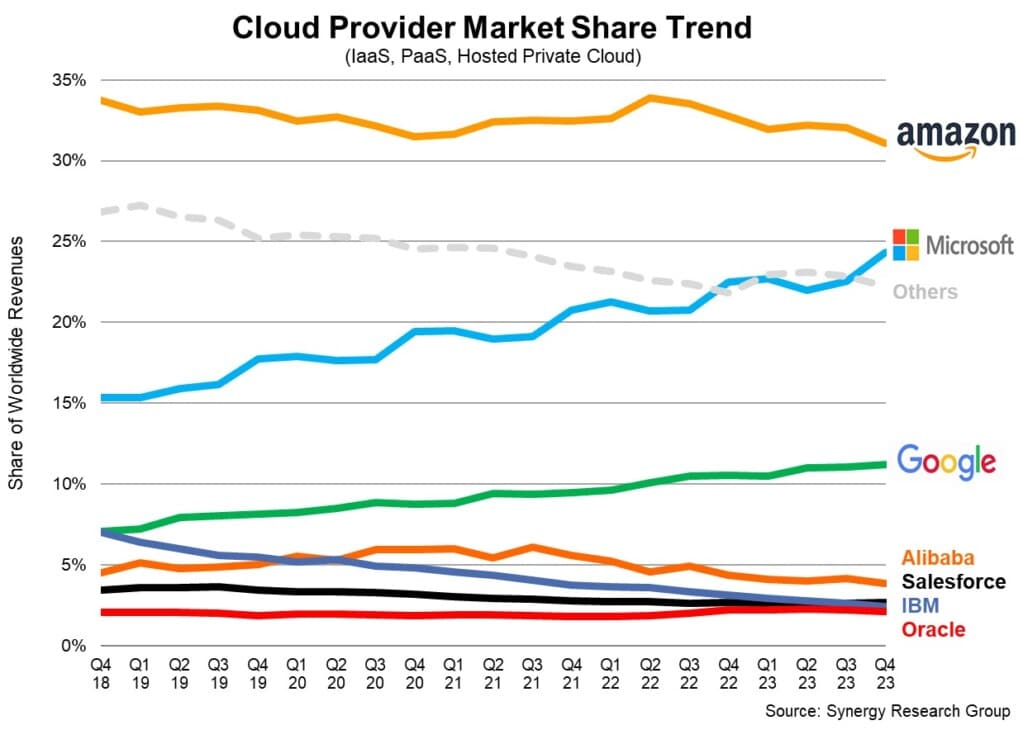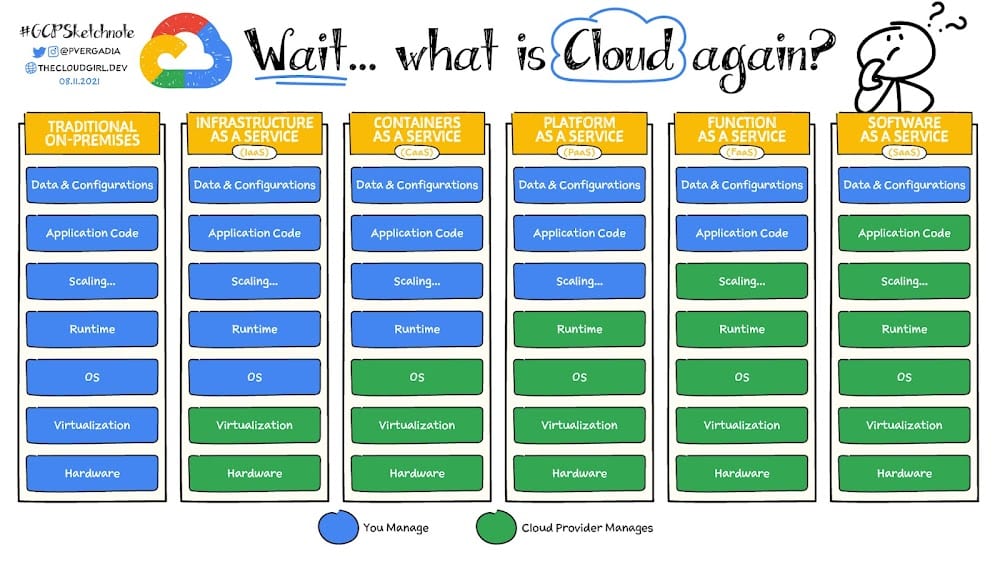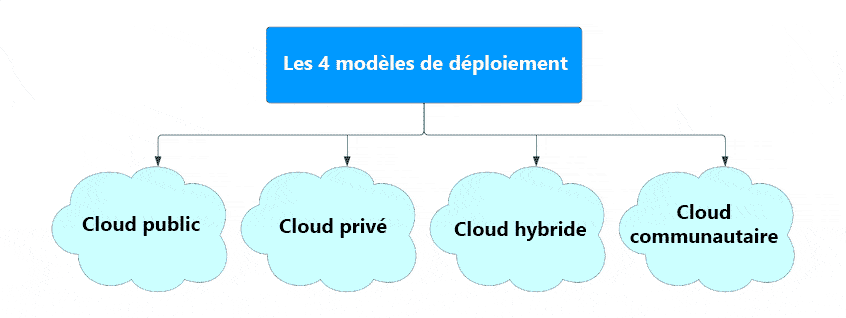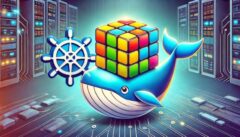The cloud is like an all-you-can-eat buffet! Unlimited access to dematerialised resources that can be consumed on demand: storage, databases, applications, computing capacity... and now artificial intelligence. With so many solutions available, choosing the right one can be a complex process. Private, public or hybrid cloud, multicloud: what are the differences? And how do you make the right choice? Our expert, Loïc Caroli, gives you the answers..

The cloud has become a ubiquitous part of our daily lives. The general public is familiar with it through video and music streaming platforms, social networks, office applications and online storage. Professionals use it in their business applications (CRM, business intelligence, project management, HRIS, etc.) or to collaborate with others (Slack, Teams, etc.).
IT specialists, meanwhile, are juggling subscriptions and APIs for different cloud services, trying to monitor usage, security and cost. The challenges of cloud management and security require expertise and constant monitoring.
Although the cloud has been around since the early 2000s, there have been several phases of acceleration in its adoption. The first, in the 2010s, with the arrival of hyperscalers, Amazon Web Services (AWS), Microsoft Azure and Google Cloud Platform (GCP) which have increased the number of innovative services and lowered costs.
The second was during the Covid epidemic, when teleworking increased the need for remote access to applications and data.
The third is currently underway, with therapid adoption of generative artificial intelligence (GAI).
IAG requires a great deal of computing and storage power, which the cloud can provide in a flexible and scalable way.

What is the cloud?
Cloud computing is an intangible concept, but its definition is fairly straightforward. It refers to any set of distributed servers that host software, infrastructure and data accessible to users via a wide area network, in return for a subscription. In short, any IT resource available when you need it, dematerialised and for hire.
The 3 cloud services
These resources can take the form of an application, a platform or an infrastructure. They are generally accessed by end users via a simple web browser or via APIs.
- SaaS (Software as a Service)
Le SaaS is a software application, web or mobile, delivered as a service. It's a rental of a ready-to-use service. Unlike software that is installed locally on a computer or server on site, you don't need to install it for each user or carry out any maintenance tasks (bug fixes, updates, etc.). SaaS is therefore aimed at end users.
- PasS (Platform as a Service)
Le PaaS adds an extra dimension to SaaS: the hardware is added to the application to form a platform. PaaS operators not only provide a remote development environment, they also offer middleware. PaaS is therefore aimed at developers.
- IaaS (Infrastructure as a Service)
The model IaaS is the rental of a technical platformincluding servers, applications, databases, etc. IaaS is designed for teams in production, but also to developers. There are also a number of different applications, such as DaaS (Desktop as a Service), FaaS (Function as a Service) and CaaS (Container as a Service).
The cloud and containers
The cloud is part of the trend towards the virtualisation of services, taking it to the next level, which is the virtualisation of services. containerization hardware infrastructures. Storage, memory, computing power, network... are delivered in the form of containers, accessible on demand via the Internet.
It consists of gathering the software code and only the components necessary for its execution, libraries, frameworks and other dependencies so as to isolate them in their own "container". The software in the container can then be moved and executed consistently across all cloud models, regardless of their operating system. The container functions as a kind of bubble, or computing environment that envelops the application and isolates it from its surroundings. It is in fact a complete portable computing environment.

The 5 characteristics of the cloud
To sum up, the cloud is defined by 5 main characteristics:
- Access from anywhere via the Internet or a corporate network : accessible anytime, from anywhere and from any device. Access is via a browser, open APIs or SDKs.
- Self service : Access to the service is via a web interface, APIs or SDKs. The service is delivered in a matter of seconds or minutes.
- Dematerialisation and resource sharing Costs are reduced with this rental model, as teams do not have to purchase their own hardware resources.
- Flexibility (or elasticity): allocating and scaling resources on demand is simple and automatic. Cloud applications can automatically reduce or increase their resources in response to peaks in activity.
- Pay-as-you-go (Pay as you go): users pay for resources according to their consumption. IThis makes it possible to optimise Capex (investment) to the benefit of Opex operating budgets.
The 4 cloud models
There are four cloud deployment models.

- The public cloud
A public cloud is operated by a third party that owns the IT infrastructure and makes it available to an end user. Amazon Web Services (AWS), Microsoft Azure, Google Cloud (GCP) and OVH in France are the main providers of public clouds. A public cloud is shared between several customers.
- The private cloud
The private cloud comprises IT resources dedicated exclusively to an organisation. It can be physically hosted internally or externally.
- Hybrid cloud
It's a combination of public and private clouds that work as a single environment.
- The community cloud
This cloud is shared by several organisations. Generally hosted externally, it can also be hosted by one of its members.
And four levels of maturity
- Cloud First
most often refers to a technology that was generally designed as a server-based technology, but which is now used and applied in the cloud environment. For example, a payroll application originally designed for an on-premises server, but which has been migrated via a lift-and-shift.
- Cloud Ready
used to describe applications and technologies designed to run on a cloud computing platform. This technology allows organisations to move their applications to the cloud without making any changes to the source code. This allows businesses to benefit from cloud services such as scalability, cost savings and increased speed.
- Cloud Native
refers to applications, technologies and software created and deployed in the cloud using cloud principles and cloud-native technologies: containers, serverless, APIs, object storage, etc. Because these applications are designed from the outset in and for the cloud, respecting the 12 Cloud Natives factors, they are considered to be the most compatible and optimised applications for the cloud.
Which cloud to choose?
Choosing a cloud solution depends on your use cases, your technology footprint and your regulatory requirements, as well as your organisation's maturity in terms of skills and operating model.
Le public cloud is better suited to heavy workloads, aow fluctuating demands or the need to subscribe to innovative offers. THE private cloud is better suited to predictable, constant workloads and applications that host large volumes of data. sensitive data. THE hybrid clouds are more versatile and will be a great success in 2024.
Which is the most secure?
Private clouds are generally considered to be more secure, because these architectures are not shared like public clouds, which are more exposed to security breaches. More and more businesses are moving away from their 100 % public cloud strategy to repatriate their sensitive data to dedicated data centres.
Which are the most expensive?
This is a complex issue because costs vary depending on a number of factors parameters such as IaaS, PaaS or SaaS models, the regions where resources are deployed, the suppliers selected, and the Customer's consumption commitment in terms of volume and duration.
It is essential to implement a FinOps approach starting with a business case.
Nevertheless, private clouds based on hyperconverged infrastructures and proprietary foundations are more costly in terms of capital expenditure, but less costly in terms of operating expenditure than public clouds.
Don't hesitate to use several cloud architectures simultaneously and orchestrate your workloads dynamically using a cloud management platform!
Depending on how your data is classified, you can run some workloads in one or more public clouds and others in a private or hybrid cloud.
Although this strategy involves managing a larger number of clouds, it offers you unrivalled flexibility, a response to the risk of dependency on a single public, private or hybrid cloud.





